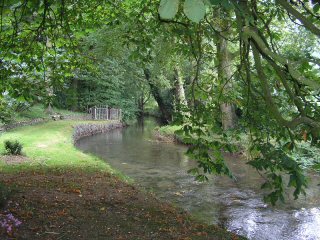
Photo: Rod Morris
Knill
Herefordshire
| Recorded in the Domesday Book (1086) as Chenille (from the Old English meaning 'Place by the hillock') the little village of Knill sits just inside the Herefordshire side of the border with Wales, three miles Southwest of Presteign and very much in 'The Marches' as these borderlands are known. The ancient boundary between Mercia and the Welsh, Offa's Dyke, runs along the ridge above the village with the modern border running along the 'Hidden Valley' floor. |
|
The gently flowing Hindwell Brook runs through the idyllic hamlet and prize Holstein and Jersey cattle from Knill Farm graze in the lush green fields on either side of its banks. The village was under the control of the Walshams and the Knills from Norman times and the Parish Church of St Michael and All Angels dates from the 13th Century. The Lords of the Manor lived at the great Elizabethan House 'Knill Court' which was largely rebuilt after being destroyed by fire in 1942.
The population of the village in the 1861 census was 84 and this has now declined to figures in the 20s. There is no war memorial in the village but in the Parish Church there is a carved stone plaque on the wall, which greets visitors with the inscription:
TO THE GLORY OF GOD
AND IN THANKSGIVING TO HIM FOR
THE VICTORY GRANTED TO US IN THE
GREAT WAR OF 1914-1918
AND FOR HIS MERCIES IN BRINGING
SAFELY HOME THE MEN OF THIS PARISH
WHO SERVED THEIR COUNTRY OVERSEAS

Photo: Rod Morris
Knill today is much the same in appearance as the village that welcomed home its sons at the end of hostilities in 1918 and it must have made a heartfelt, welcome sight to the war weary 'Men of the Marches' as they trooped home from the horrors of the Great War. Knill remains a truly beautiful, tranquil and most thankful village.